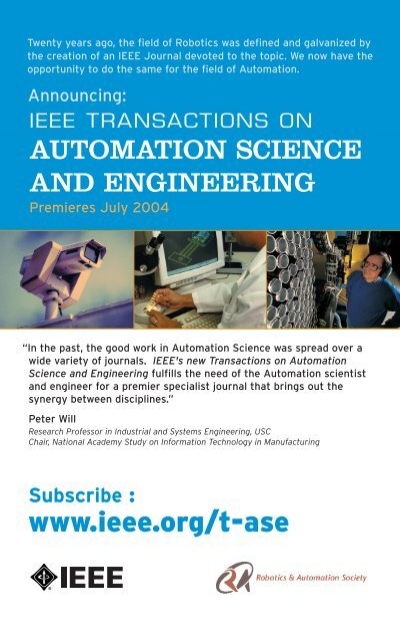Power Modulation Enables Reduced Motor Power Requirement of Ankle Assistance Exosuit
IF 6.4
2区 计算机科学
Q1 AUTOMATION & CONTROL SYSTEMS
IEEE Transactions on Automation Science and Engineering
Pub Date : 2024-11-05
DOI:10.1109/TASE.2024.3488714
引用次数: 0
Abstract
Actuation efficiency is a significant consideration for soft exosuits. It has important significance for reducing system weight and improving the effectiveness of walking assistance. Inspired by a fact that desired assistance from exosuits varies over the gait stage, this study developed a power modulation unit (PMU) to adapt to human walking characteristics, aiming to reduce the power requirement of exoskeletons. The underlying principles consist of: 1) dividing the gait phase into assistance period and idle period by different gait characteristics, where the terminal stance phase is defined as the assistance period and other phases are defined as the idle period; 2) motor power is stored in elastic elements during the idle period with mechanical advantage; 3) an amplified power bursts during the assistance period. Preliminary experiments were carried out on an ankle exosuit with human users. Experimental results indicate that the proposed PMU can amplify the output power by 3.1 times while affecting little on wearers’ normal gait, which implies the potential of the developed PMU for use in wearable actuation systems. Note to Practitioners—This work was motivated by the trade-off between multipath assistance and lightweight actuation. That is, multipath assistance typically necessitates multiple motors, consequently adding to the overall weight of the system. In this work, we developed a PMU to adapt to human walking characteristics (motor power is stored in elastic elements during the idle period and released when needed), aiming to reduce the requirement for peak actuation power. Experimental results show that the PMUs can provide an average power amplification ability of 3.1 times and does not interfere with normal human gait. The developed PMU holds great potential in walking-assisted exosuits or other devices for human movement assistance.功率调制可降低踝部辅助外装甲对电机功率的要求
驱动效率是软外衣设计的重要考虑因素。对减轻系统重量,提高辅助行走效能具有重要意义。受外骨骼在不同步态阶段对辅助的需求不同这一事实的启发,本研究开发了一种适应人类行走特征的功率调制单元(PMU),旨在降低外骨骼的功率需求。其基本原理包括:1)根据不同的步态特征将步态阶段划分为辅助期和空闲期,其中末站阶段定义为辅助期,其他阶段定义为空闲期;2)电机动力在空闲时储存在弹性元件中,具有机械优势;3)在援助期间,一个放大的功率爆发。初步的实验是在脚踝外装上进行的。实验结果表明,所设计的PMU在输出功率放大3.1倍的同时,对佩戴者的正常步态影响很小,具有应用于可穿戴驱动系统的潜力。从业人员注意事项—这项工作的动机是在多路径辅助和轻量级驱动之间进行权衡。也就是说,多路径辅助通常需要多个电机,从而增加了系统的总体重量。在这项工作中,我们开发了一种适应人类行走特性的PMU(电机功率在空闲时存储在弹性元件中,在需要时释放),旨在降低对峰值驱动功率的要求。实验结果表明,pmu的平均功率放大能力为3.1倍,且不影响人体正常步态。开发的PMU在辅助行走的外装或其他人类运动辅助设备中具有巨大的潜力。
本文章由计算机程序翻译,如有差异,请以英文原文为准。
求助全文
约1分钟内获得全文
求助全文
来源期刊

IEEE Transactions on Automation Science and Engineering
工程技术-自动化与控制系统
CiteScore
12.50
自引率
14.30%
发文量
404
审稿时长
3.0 months
期刊介绍:
The IEEE Transactions on Automation Science and Engineering (T-ASE) publishes fundamental papers on Automation, emphasizing scientific results that advance efficiency, quality, productivity, and reliability. T-ASE encourages interdisciplinary approaches from computer science, control systems, electrical engineering, mathematics, mechanical engineering, operations research, and other fields. T-ASE welcomes results relevant to industries such as agriculture, biotechnology, healthcare, home automation, maintenance, manufacturing, pharmaceuticals, retail, security, service, supply chains, and transportation. T-ASE addresses a research community willing to integrate knowledge across disciplines and industries. For this purpose, each paper includes a Note to Practitioners that summarizes how its results can be applied or how they might be extended to apply in practice.
 求助内容:
求助内容: 应助结果提醒方式:
应助结果提醒方式:


